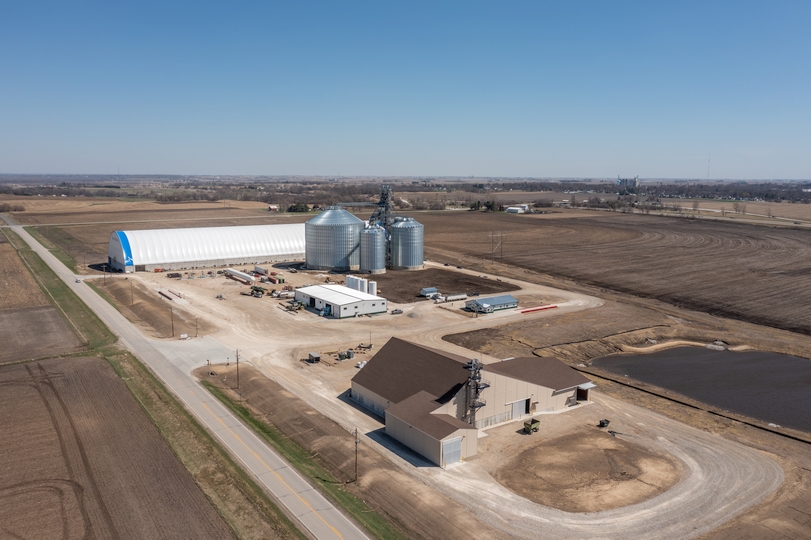The Four Key Pillars of a Successful Digital Strategy in Ag Retail
Editor’s note: This is the final installment of a four-part series to help ag retail leaders navigate defining and implementing their own digital strategy. (Read eCommerce Alone Won’t Cut It for Ag Retailers, Just Adding an App Isn’t the Answer in Ag Retail’s Digital Transformation, and How to Build a Digital Strategy that Prioritizes Both Your Customers and Your Team).
“When you’ve met one ag retailer, you’ve met one ag retailer.”
This saying nails it. Today’s retailers are all different, and so are their approaches to “digital.”
We have an interesting perspective at AgVend. We watch and support our network of partners along their respective digital journeys, and while no two paths are the same, we’ve seen four trends emerge in the most successful ag retailers.
We suggest using these four pillars as a framework for any ag retailer looking to integrate digital into the way they go to market and engage the grower of tomorrow.
1. Technology As An Added Touchpoint
When many people hear the words “digital transformation”, they immediately envision images of disruption. A shift away from the “old way” of agriculture, towards a world where technology replaces relationships on the farm.
But both data and common sense tell us this is not the way to succeed in this industry. It just won’t work. To be successful, “digital” needs to enhance relationships, not replace them.
The actual shift happening is that innovative retailers are pushing hard to be able to meet the grower on their terms, and support their customers in the most effective way possible for their business. And they are using technology to accomplish this.
But why the shift?
First and foremost, this isn’t a story about you, the ag retailer. It’s a story about your customers. And their changing preferences. And their changing expectations.
Growers today want the convenience of digital access. But less than 10% of them actually look to do business exclusively online.
And so our partners don’t see “digital” as an interface between their customers and their ERP system or a replacement for their crop advisors, but rather, as a way to amplify the connection between their growers and their team.
Consider the experience of Doug Kuenzi, Agronomy Division Manager at Pratum Co-op. He had a phone conversation with a customer, then used his Grower Portal to send a direct follow-up with the products they discussed. That message drove the customer to expand on his request, using Pratum’s app to include additional products.
“The portal was simply a way to continue a conversation,” Doug said. “The grower I worked with still felt like he could pick up the phone and talk to me, but with the added benefit of having info and numbers right at his fingertips, and I like having the info readily available as well. The experience led directly to a stronger relationship and increased sales.”
Using technology to help maximize collaboration with customers and staff is the real “next frontier.” Functionality like the option to pay an invoice online might have been novel a few years ago, but it is table stakes for today’s customer.
And so the goal of today’s leading ag retailers is to put the grower at the center of their people, processes, and technology, to support them however they want to do business. Augment, don’t replace.
2. Unified Experience
The explosion of technology in other parts of the customer’s life has unfortunately shined a harsh light on the systems and processes many growers use when working with their retail partner today.
The issue?
Simply put, they now know what “good” is. And they’re starting to expect the same from all the companies they conduct business with, input-suppliers included.
Gone are the days where people tolerate clunky user experiences, confusing workflows, and multiple log-ins to get the task at hand done.
So we have two problems that arise:
- First: it’s an incredibly high bar to clear to be considered “intuitive” or “easy”.
- Second: if you don’t clear that high bar, it’s not like people will merely use it a bit less. They won’t use it at all.
This is the “usability problem” with tech in ag — the “capability” of a tool simply doesn’t matter if it’s hard to use.
So, where do you start?
Start with unifying your experience across business units.
Growers still want to work with multiple people at your location (the agronomist, grain merchandiser, seed rep, etc.). But when it comes to digital, they expect one look and feel and a single point of entry when managing their business with their retailer, regardless of department.
“The portal gives us the ability to provide a unified experience for our customers, regardless of which business units they work with today,” said Craig Patty, Vice President Sales & Marketing at River Valley Cooperative. “And we now have the ability to serve ‘The Whole Acre’ from one single platform.”
An easy-to-use interface that surfaces all the data and functionality I need to best serve my customers and collaborate with my team members, all in one place behind a single log-in. Sounds amazing!
Of course, that’s really hard to do in the real world. Connecting systems and translating data in a way that makes sense for the user based on their permissions is the dream — some call it “interoperability;” we call it “solving the ‘translation’ problem.”
Today’s ag retailer has a ton of systems, and they don’t talk particularly well. Helping to translate information between these tools is the biggest value-add we offer to our partners, right up there with “usability.”
“The online portal has the ability to quickly and accurately link different digital systems,” said KC Graner, Senior VP of Agronomy at Central Farm Service. “Our cooperative utilizes two different ERPs, which obviously presents extra intricacy when connecting our internal and external customers to their accounts. Our partnership with AgVend allows us to focus more on the customer experience than worrying about getting onto one ERP.”
A general rule of thumb: if you want to be successful adopting digital, try and decrease the number of log-ins your staff and customers need to make to accomplish their tasks. Sounds simple, but it’s not. Trust us.
3. Scalability and Adaptability
This brings us to our third key pillar. On one hand, the goal is simplicity. But on the other it’s undoubtedly the power that comes with increased functionality. Companies are responding to this demand, and we continue to see an explosion in the number of tools available for consideration in the modern retail tech stack.
“How do we position ourselves to be able to incorporate these new technologies into our business, with as little friction as possible?” That’s one of the main questions we hear early on in the journey with our partners.
Our answer? Your systems and tools can’t be static. They have to be flexible, able to grow to fit the needs of your customers. Those opportunities will continue to change over time, whether that’s around carbon, traceability, or whatever the hot button topic of tomorrow is.
Don’t let rigid technology force you to create inflexible processes that your people then must adopt; rather, start with the people, your customers, your staff, your management, design the best processes to maximize their utility, and gear your tech to support those outcomes.
If you’re working with a strong partner, flexibility should be part of how they operate. Asking them to change a feature based on an industry advancement should never trigger an “out of scope” conversation or incur a new “maintenance contract” or get saddled to a dusty far-out “roadmap”.
They know that there’s no such a thing as “out of the box” in this industry.
And the best partners won’t hide from these opportunities, they will help you find them and build them into your business.
“This ag industry is in a constant state of change, and those that change with it have the chance to capture more business, retain employees, and increase the company’s bottom line,” said Wes Roll, COO at West Central Ag Services. “Working with AgVend has allowed us to provide something new and relevant to our staff and our customers that help them do business better, in real time, and more conveniently.”
In short: You need a partner and a plan that can grow alongside the changing market. One that helps you and your customers take advantage of the rapid industry advancements, not be overwhelmed by them.
4. Strong Education and Employee Development
If you follow the first three pillars we’ve discussed when designing your digital strategy, you’re on the path.
But if you don’t manage the change on the “people” side, you will undoubtedly fail.
People before processes, processes before tech. The old axiom is an old axiom for a reason: it’s true.
So start by explaining the Why.
Why are we implementing a new way of working with our customers?
Why is now the right time?
Why will this improve the experience for our employees?
The first hurdle we keep seeing at the launch of any digital strategy is staff worry they’re being replaced. It’s important to communicate this is not the case — and this tool is actually there to complement their work.
For some this means showing them how this will make them more productive and effective at their job, for others this might be simply helping them see how this will make their lives easier!
The second hurdle we see companies face is the employee fear of not being able to expertly use the technology. There has to be structure in place to help your staff build confidence with the new experience and know where to go with any questions they or their customers might have.
Choosing to work with a technology partner means understanding and accepting a company’s support structure. Help desks are great. But they should be only one prong of a multiple-front approach that includes a detailed onboarding plan, new-hire education, regularly scheduled refreshers, and executive coaching.
When your team:
- Understands the why behind your strategy
- Has confidence using the new tooling
- Knows where to go with questions
… you have navigated the biggest barriers to adoption.
With these four pillars guiding your digital strategy, the sky’s the limit for your organization. As technology becomes more and more important in today’s ag retail world, our hope is you can combine your own unique differentiators with these four elements to create a clear, future-proof roadmap for your organization. Your customers and internal team will be glad you did.






